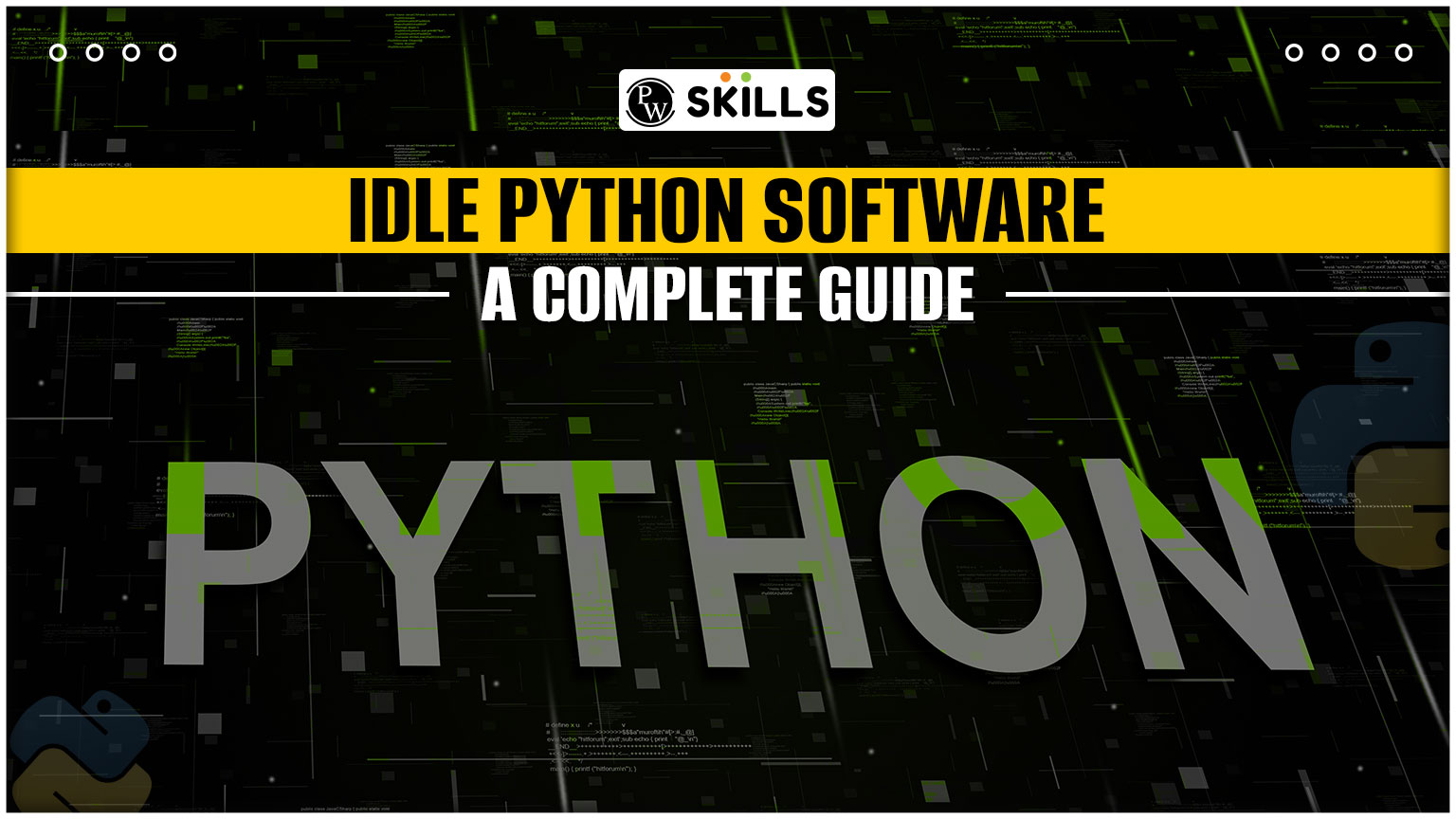Introduction
Python IDLE (Integrated Development and Learning Environment) is a default editor that accompanies Python, designed to be simple and easy to use. It’s a vital tool for beginners and those who prefer a lightweight environment for coding. This article aims to provide a thorough understanding of Python IDLE, covering its features, advantages, disadvantages, and practical applications.
What is meant by Python IDLE?
Python IDLE stands for Integrated Development and Learning Environment. It’s a simple yet efficient environment for writing, debugging, and running Python scripts. IDLE comes pre-installed with Python, making it accessible right from the start for those who install Python on their system.
What are the primary features of Python IDLE?
Python IDLE is equipped with several features that make it a valuable tool for programmers:
- Interactive Shell: IDLE provides an interactive Python shell that allows users to execute Python commands and see the results immediately.
- File Editor: A built-in file editor for writing and editing Python scripts with features like syntax highlighting and auto-completion.
- Debugger: A basic debugger with support for setting breakpoints and stepping through code.
- Multi-window Text Editor: Supports multiple windows for editing code, allowing you to work on multiple scripts simultaneously.
- Integrated Documentation: Quick access to Python documentation within the environment.
- Configuration Options: Customize the appearance and behavior of the editor to suit your preferences.
Advantages of Python IDLE:
- User-friendly Interface: Simple and easy to use, perfect for beginners.
- Lightweight: Doesn’t consume much system resources.
- Integrated Tools: Includes editor, debugger, and interactive shell in one package.
- Pre-installed: Comes with Python, eliminating the need for separate installation.
- Educational Use: Designed with learning in mind, making it ideal for educational purposes.
Disadvantages of Python IDLE:
- Limited Features: Lacks some advanced features found in other IDEs.
- Performance Issues: Can be slower with larger projects.
- Basic Debugger: The debugger is quite basic and may not meet the needs of advanced developers.
- Less Customizable: Limited customization options compared to other IDEs.
What is meant by the Interactive Interpreter?
The interactive interpreter in Python IDLE is a shell where you can type Python commands and see the results immediately. This feature is particularly useful for testing code snippets, learning, and experimenting with new Python features. It provides instant feedback, helping you understand how your code works in real-time.
What is a file editor?
The file editor in Python IDLE is a text editor specifically designed for writing Python scripts. It includes features like syntax highlighting, which visually distinguishes different parts of your code, and auto-completion, which helps you write code faster by predicting and completing code snippets. The editor also allows you to save, open, and manage your Python scripts efficiently.
What is a breakpoint?
A breakpoint is a debugging tool that allows you to pause the execution of your program at a specific line of code. This is useful for examining the state of your program at various points to identify and fix bugs. In Python IDLE, you can set breakpoints in your code, and when the program execution reaches a breakpoint, it will pause, allowing you to inspect variables and step through the code line by line.
How can you execute a file in IDLE software?
To execute a file in Python IDLE, follow these steps:
- Open Python IDLE.
- Load your Python script in the file editor.
- Save your script if you haven’t already.
- Press F5 or select Run > Run Module from the menu.
Your script will run, and the output will be displayed in the interactive shell.
How can you improve your workflow in IDLE software?
Improving your workflow in Python IDLE involves taking advantage of its features and customizing the environment to suit your needs. Here are some tips:
- Use Keyboard Shortcuts: Learn and use keyboard shortcuts for common tasks to speed up your workflow.
- Customize the Editor: Adjust the font size, color scheme, and other settings to create a comfortable coding environment.
- Leverage the Interactive Shell: Use the interactive shell for quick testing and debugging of small code snippets.
- Utilize Breakpoints: Make effective use of breakpoints for debugging.
- Organize Your Code: Keep your code organized with proper indentation and comments.
For those looking to delve deeper into Python and enhance their coding skills, consider the DSA Python Course offered by PW Skills, which covers data structures and algorithms comprehensively.
Conclusion:
Python IDLE is a versatile and user-friendly tool that serves as an excellent starting point for beginners while also providing essential features for more experienced programmers. Despite its simplicity, it offers a robust environment for learning, coding, and debugging Python scripts. By understanding its features, advantages, and limitations, you can make the most of Python IDLE and improve your programming workflow.
Learn DSA Python at PW Skills:
For those eager to master data structures and algorithms in Python, the DSA Python Course at PW Skills provides a comprehensive curriculum designed to build strong foundational skills and enhance problem-solving abilities.
FAQs
How do I install Python IDLE?
Python IDLE comes pre-installed with Python. When you install Python, IDLE is included by default.
How do I enable IDLE in Python?
IDLE is enabled by default when you install Python. Simply search for "IDLE" in your system's applications menu and launch it.
Why is Python IDE called IDLE?
IDLE stands for Integrated Development and Learning Environment, reflecting its purpose as both a development and educational tool.
Is IDLE good enough for Python?
Yes, IDLE is sufficient for beginners and for small to medium-sized projects. For larger projects, you might prefer more advanced IDEs.

